Clash of the Titans (2010)
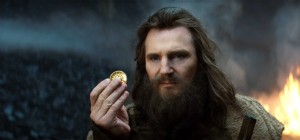 It’s not a secret that the goal of reputable porn filmmakers has been to make a movie that is both erotic and dramatically riveting. Since the early 70s, the heyday of well made pornography (which includes such titles as The Opening of Misty Beethoven and The Devil in Miss Jones), there have been a few ambitious attempts* to make such a film. Tinto Brass’ Caligula, which is on the big budget end, is a nauseating, unsexy mess, a choppy and badly edited jumble that just happens to star Malcolm McDowell, Helen Mirren, Peter O’Toole, and John Gielgud. That producer and Penthouse creator Bob Guccione chose to cut extraneous hardcore footage into the film didn’t help Caligula, which as a movie might have played better as softcore. The very nature of hardcore pornography, where sex scenes aren’t just graphic, but lengthy and “real,” eliminates the possibility of legitimate dramatic interest, since the movie has to literally stop to provide us with titillation.
It’s not a secret that the goal of reputable porn filmmakers has been to make a movie that is both erotic and dramatically riveting. Since the early 70s, the heyday of well made pornography (which includes such titles as The Opening of Misty Beethoven and The Devil in Miss Jones), there have been a few ambitious attempts* to make such a film. Tinto Brass’ Caligula, which is on the big budget end, is a nauseating, unsexy mess, a choppy and badly edited jumble that just happens to star Malcolm McDowell, Helen Mirren, Peter O’Toole, and John Gielgud. That producer and Penthouse creator Bob Guccione chose to cut extraneous hardcore footage into the film didn’t help Caligula, which as a movie might have played better as softcore. The very nature of hardcore pornography, where sex scenes aren’t just graphic, but lengthy and “real,” eliminates the possibility of legitimate dramatic interest, since the movie has to literally stop to provide us with titillation.
Obviously, pacing is a problem in these situations; and eventually, a movie like Caligula turns into one big gimmick as we wait to see if any of the notable actors perform in the hardcore moments. (They don’t, and we have to settle for Malcolm McDowell in the title role engage in all manner of messy, but dull, violence.)
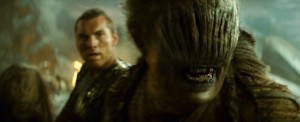 Desmond Davis’ 1981 version of Clash of the Titans is very similar to Caligula in a number of ways, such as the high-quality British actors stiffly getting through faux profound dialogue (Lawrence Olivier, Claire Bloom, Maggie Smith) while being upstaged by the monsters designed by Ray Harryhausen—also known as porn for stop-motion animation fans. (Harryhausen also created monsters for other films based on Greek myths, like Jason and the Argonauts). As with Caligula, the famous actors are like extras in their own movie, unknowingly embarrassing themselves as the real work is done off the set and in the editing room. It turns what could have been a joyous, prestige picture into something clunky—if a lot more kid-friendly.
Desmond Davis’ 1981 version of Clash of the Titans is very similar to Caligula in a number of ways, such as the high-quality British actors stiffly getting through faux profound dialogue (Lawrence Olivier, Claire Bloom, Maggie Smith) while being upstaged by the monsters designed by Ray Harryhausen—also known as porn for stop-motion animation fans. (Harryhausen also created monsters for other films based on Greek myths, like Jason and the Argonauts). As with Caligula, the famous actors are like extras in their own movie, unknowingly embarrassing themselves as the real work is done off the set and in the editing room. It turns what could have been a joyous, prestige picture into something clunky—if a lot more kid-friendly.
Louis Leterrier’s remake of Clash of the Titans is overwhelmed by its own gimmick, a late production decision to convert the already shot footage from 2-D to 3-D. Because Leterrier doesn’t provide us with a huge amount of backstory (it feels like the movie was originally a three-hour epic), we have to be on our toes to fill in the blanks. We have to remember back to Greek myths read as a child or wherever we might have picked up the details of the stories of Zeus, Hades, Apollo, Athena and Perseus. But the 3-D process—which, in this case, doesn’t work well with the actors (the CGI fares better)—destroys not just the quality of the image**, but our interest in what’s going on. The 3-D undermines the energy of the film; we just wait for the next manipulated image. And we don’t care so much about whether Perseus the Demi-God is able to beat Hades and Zeus’ timeline to destroy the human race (over what amounts to Zeus’ insecurity, but the movie is too serious to explore that).
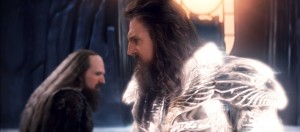 The first hour is very busy, filled with so many portentous statements about great battles, obvious statements, declarations of threat***, that it appears the movie will be ripe for cheerful mocking, approaching the original’s charmingly clunky ineptness. Sure, the scenes with British actors with gravitas, such as Liam Neeson as Zeus (outfitted like an extra from Tron) and Ralph Fiennes as Hades (who ought to do something about his dry skin; his forehead is a mess) are appropriately stilted. But there’s no stop-motion animation to enliven things, just a lot of CGI made to look muddy because of the 3-D. The special effects are mostly mediocre (an early scene on a boat has the sailors singing, I rewrote the song for accuracy, “We’re on a set/In front of the Green Screen”), until we get to the giant scorpion scene, which is not only a well-edited scene but one of the first to offer interesting 3-D perspectives. The moments where the characters ride the scorpion and stab at them remind us of similar scenes in Starship Troopers, but in the right way.
The first hour is very busy, filled with so many portentous statements about great battles, obvious statements, declarations of threat***, that it appears the movie will be ripe for cheerful mocking, approaching the original’s charmingly clunky ineptness. Sure, the scenes with British actors with gravitas, such as Liam Neeson as Zeus (outfitted like an extra from Tron) and Ralph Fiennes as Hades (who ought to do something about his dry skin; his forehead is a mess) are appropriately stilted. But there’s no stop-motion animation to enliven things, just a lot of CGI made to look muddy because of the 3-D. The special effects are mostly mediocre (an early scene on a boat has the sailors singing, I rewrote the song for accuracy, “We’re on a set/In front of the Green Screen”), until we get to the giant scorpion scene, which is not only a well-edited scene but one of the first to offer interesting 3-D perspectives. The moments where the characters ride the scorpion and stab at them remind us of similar scenes in Starship Troopers, but in the right way.
However, the choppiness of Clash of the Titans turns the story into adventures in bullet points. So the audience has to do a lot of waiting until the next setpiece. None of the human characters distinguish themselves (as in Terminator: Salvation, Sam Worthington, playing Perseus, is once again a block of wood). They’re just the typical catalog of rowdy but scared villagers, fearless warriors, and a disconcerting dearth of Rip Torn, who should be cast as a drunken lout in every single one of these kinds of movies.
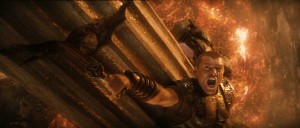 What should be a showstopper, the inevitable confrontation with Medusa****, is let down by the choice to have her as an entirely CGI entity. If she’s just computer animation, the anger and resentment of her character is completely without weight. A better choice might have been to have an actress like Uma Thurman play her and animate what’s necessary around her (the snakes, the tail).
What should be a showstopper, the inevitable confrontation with Medusa****, is let down by the choice to have her as an entirely CGI entity. If she’s just computer animation, the anger and resentment of her character is completely without weight. A better choice might have been to have an actress like Uma Thurman play her and animate what’s necessary around her (the snakes, the tail).
Leterrier has been swamped with these sorts of scale decisions in Clash and his last film, The Incredible Hulk, bypassing the energy he brought to the fantastically preposterous and much lower budgeted Transporter 2. You sense that he’s been overwhelmed and there’s virtually no joy in the filmmaking, at least until the end. At that point we get a marvelous money shot of Hades’ creation, The Kraken, and a spectacular set of 3-D effects, almost making it worthwhile to sit through the first 90 minutes of the film. If the rest of Clash of the Titans had been produced in such an absurd way, it might have made that joyous leap into camp. Or maybe they should have just cast Rip Torn as Medusa?
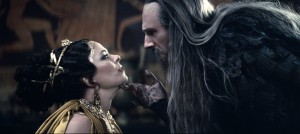 * In fictional films that deal in legitimizing porn, both Paul Thomas Anderson’s Boogie Nights and Nico Mastorakis’ Glitch do not have their porn director characters produce a quality movie that we are allowed to see (or even talk about). Perhaps because such a thing is fool’s gold?
* In fictional films that deal in legitimizing porn, both Paul Thomas Anderson’s Boogie Nights and Nico Mastorakis’ Glitch do not have their porn director characters produce a quality movie that we are allowed to see (or even talk about). Perhaps because such a thing is fool’s gold?
** As 3-D always does, the movie looks dark and dingy—not polished and expensive, as the 2-D version probably was.
*** A friend once described the dialogue of the Jean-Claude Van Damme vehicle Cyborg as being of two varieties: one where the characters scream “Arrrrgghhhh!!!” as they engage in combat or “Fuuuccckkkk!!!” as they lose.
**** Which followed a trip across the river Styx by the skeletal Ferryman, who demands a bribe for a ride. When we see Perseus and company hiding beneath the deck, there are thousands of gold coins strewn around—prompting the question, “What does the Ferryman spend all that money on?” Clearly it isn’t accoutrements for his ship.




pender says:
April 2nd, 2010
6:57 pm
Too funny. I will be waiting until this goes to my 2D TV on HBO. Thanks.